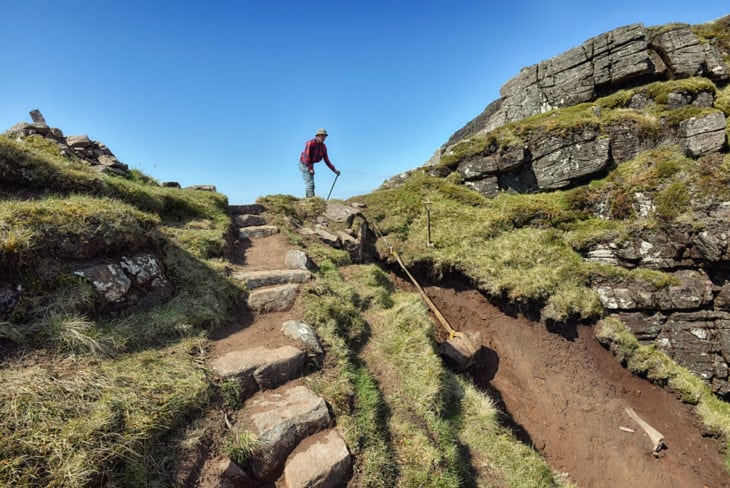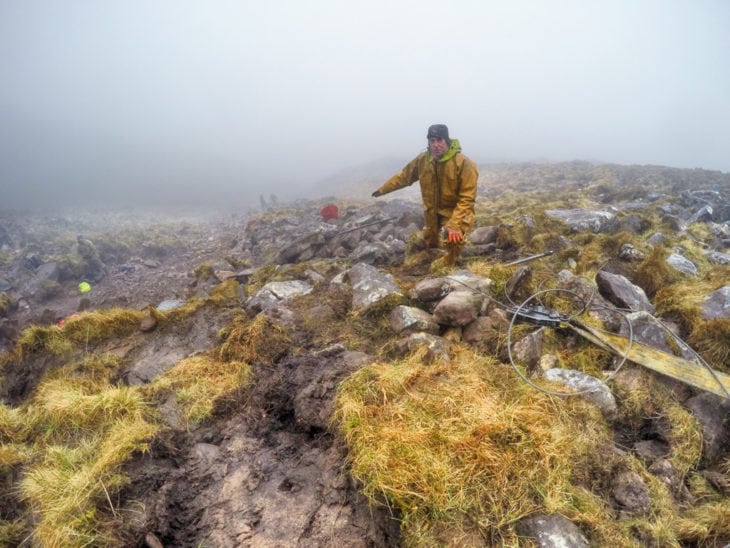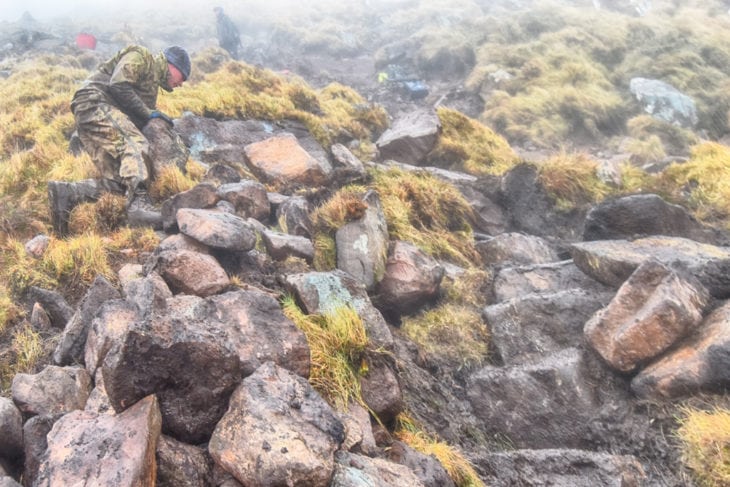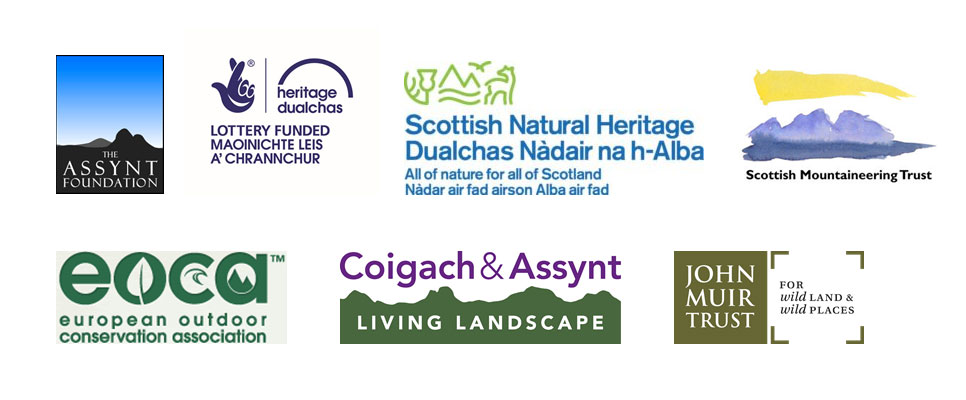Rant
,
Guest blog by Chris Goodman, Path Project Officer for the John Muir Trust
I’ve been looking over the work on the steep north side of Suilven that was completed last year. The team worked on two sections, one halfway up the slope where the path had become a steep loose scree shoot and at the bealach where a broad gully was forming.

The work was technically challenging due to the gradient and ground conditions but the team did a fantastic job of building pitching (continuous stone steps), revetment (building up the edge of the path with boulders where it had collapsed) and of blocking desire lines (using boulders to guide walkers away from the unsustainable direct line). Looking at the work a year on though and it’s already showing signs that not everyone is sticking to the built path. It’s a common problem which happens for a number of reasons and can be very frustrating if I’m not mindful.

One cause is the height of the steps. Anything over about 6” and it’s too high a step for a lot of walkers (particularly those ascending) who will tiptoe up the grass to the side, trampling and killing the vegetation. If the steps are a bit awkward to step down onto (eg. they have a small tread area or are at a slight angle) then those descending will tend to find a way around them too causing the same damage. Sometimes there might be a small puddle on the path which walkers in their best waterproof hiking boots don’t want to walk through, again choosing the grass to the side, turning that into a muddy patch which then spreads and spreads. Finally, there are those that only want to take the most direct route down and if the path takes a dog’s leg to reduce the gradient and take a more sustainable line then they’ll just trample straight over the landscaping on the path edges and cut the corners.
In short, when hill walkers go out into the hills they’ll avoid big steps, awkward ground and puddles and won’t walk any further than they have to. This always makes me laugh given that hill walking involves walking for miles up big, steep hills through a rough natural landscape which is generally wet under foot. Sometimes I wonder why these people have ventured out onto the hills in the first place. And when they do all of the above but throw a comment to you as they pass saying, “great job on the path!” while they trample across all of the landscaping you’ve spent hours doing then I just want to scream.
But I don’t.
And I don’t say all of the above as a criticism either. Understanding why people don’t stick to the path at particular points is a fundamental part of my job. It’s a crucial part of making sure that the work that is carried out is going to work, long-term, and not end up becoming redundant as walkers by-pass the path and create a new trample line to the side. It’s a challenge, a kind of game that I sometimes play of working out how I can alter the ground as subtly as possible to direct everyone along the path without them realising they’ve been guided that way.
So with the team starting back on the steep north side of Suilven again, we’ll go back over last year’s work with this understanding and stick in those extra steps and blockers that are needed to make sure it lasts.

Find out more about the Suilven Path Project here

